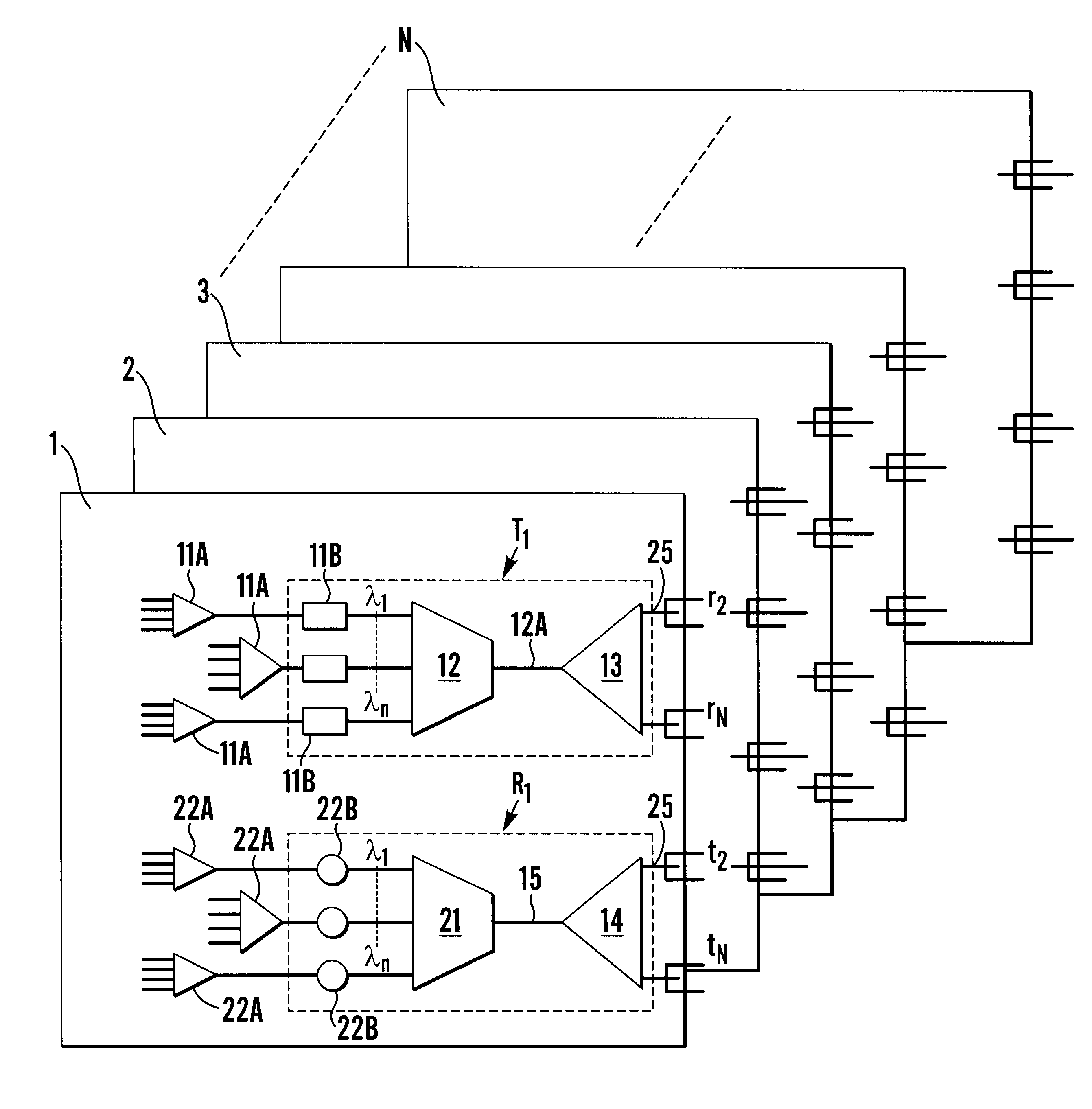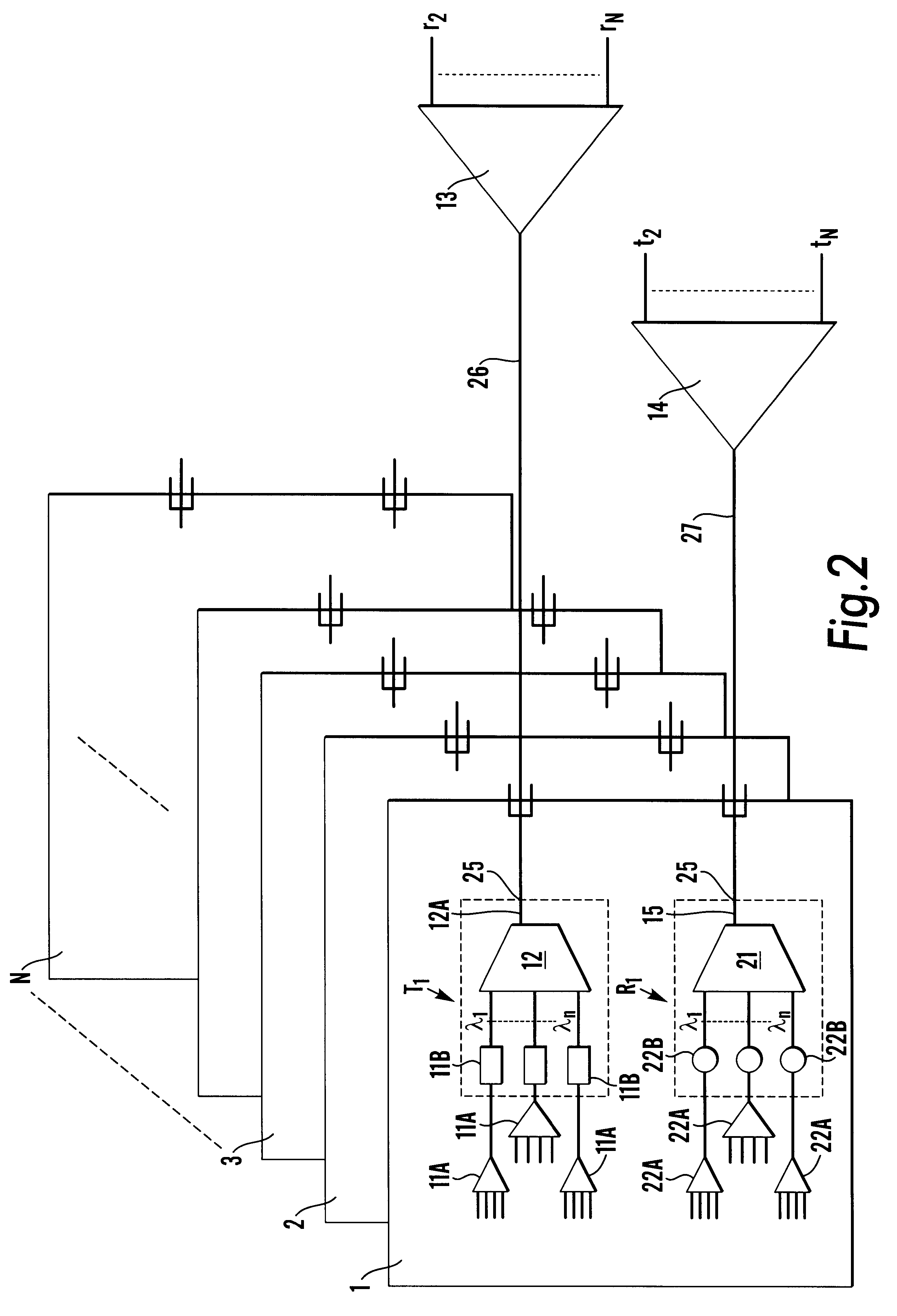Connecting a plurality of circuit boards
a technology of circuit boards and circuit boards, applied in the direction of circuit optical details, optical elements, instruments, etc., can solve the problems of high clock frequency, prohibitive cost of fabricating prior art circuits, etc., and achieve the effect of reducing the cost of conventional electronic solutions and reducing the cost of fabrication
- Summary
- Abstract
- Description
- Claims
- Application Information
AI Technical Summary
Benefits of technology
Problems solved by technology
Method used
Image
Examples
Embodiment Construction
FIG. 1 shows optical circuits for use in connecting N electrical circuit boards 1-N so that each electrical circuit board can communicate with each other electrical circuit board. The optical circuits each comprise a transmitter module T.sub.1 and a receiver module R.sub.1. The optical circus provided on the other electrical circuit boards 2-N similarly comprise transmitter modules T.sub.2 -T.sub.N and receiver modules R.sub.2 -R.sub.N. The optical circuits are associated with the respective electrical circuit boards 2-N and may be mounted thereon as shown in FIG. 1.
The optical circuit boards preferably comprises one or more silicon-on-insulator (SOI) chips as will be discussed further below.
The transmitter module T.sub.1 comprises electrical to optical converters which receive data from the first electrical circuit board 1 and convert the data into modulated optical signals. The electrical data is typically provided in parallel form and is converted to a serial data stream by elect...
PUM
 Login to View More
Login to View More Abstract
Description
Claims
Application Information
 Login to View More
Login to View More - R&D
- Intellectual Property
- Life Sciences
- Materials
- Tech Scout
- Unparalleled Data Quality
- Higher Quality Content
- 60% Fewer Hallucinations
Browse by: Latest US Patents, China's latest patents, Technical Efficacy Thesaurus, Application Domain, Technology Topic, Popular Technical Reports.
© 2025 PatSnap. All rights reserved.Legal|Privacy policy|Modern Slavery Act Transparency Statement|Sitemap|About US| Contact US: help@patsnap.com



